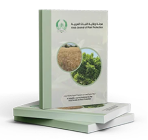B.G. Ofi, Y.A. Salih and M.H. Abass*
Department of Plant Protection, College of Agriculture, University of Basrah, Basrah, Iraq.
Pages 304-309
A Regional Scientific Journal Published Four Times a Year by the Arab Society for Plant Protection


B.G. Ofi, Y.A. Salih and M.H. Abass*
Department of Plant Protection, College of Agriculture, University of Basrah, Basrah, Iraq.
Pages 304-309
The current study highlighted the potential pathogenicity of casual fungus that causes leaf, stem and pod spot disease in faba bean. The symptomatic leaves and pods of faba bean were collected from different areas around Basrah city, south of Iraq. The isolation procedure was performed on PDA plates, followed by morphometric and microscopic identification. Briefly, a superficial white/orange to a creamy colour mycelium was observed with a circular entire edge and a flossy to smooth velvety morphology. The conidia were oval to oblong with 3-6 transverse septa, producing a set of 4-8 long-chain conidia. Molecular analysis of the ITS sequence confirmed the identity of the fungus; the fungus formed a distinct subclade within the Alternaria burnsii clade, and the ITS sequence was submitted to the NCBI under the accession number LC769966.1. Pathogenicity tests confirmed the virulence of A. burnsii on broad bean leaves under greenhouse conditions. First, disease symptoms were examined on young broad bean leaves five days’ post inoculation. White necrotic spots appeared on the aerial parts of the broad bean, and each spot enlarged and coalesced to form necrotic lesions distinguished by black colour. The findings of this study revealed the pathogenicity of A. burnsii for the first time in the aerial parts of broad beans in Iraq.
Faba bean, necrotic spot, molecular diagnosis, Iraq, Alternaria burnsii.

